For those of us in San Francisco with an eye towards nature, Mount Tamalpais is always in our field of view. Topping out at 2,579 feet above sea level, the mountain cascades to the ocean in a sequence of rolling, grassy hills and redwood forests. Its bluffs transform from green to amber as the rain becomes less frequent, and its upper levels remain exposed to the sun when summer fog envelops the bay. Recently, Brooke and I brought a few friends to Mount Tam to hike along the Coastal Trail and I was reminded why I hold it to be one of my favorite locations in the country, and have since been thinking about its role as a cultural presence.
Clearly, mountains have captured the human imagination in all places and at all times. According to anthropologist Betty Goerke, mountain peaks play a central role in the creation myths of many native California tribes, because they were thought to have been exposed while the rest of the world was underwater1. As such an alluring landscape, I was somewhat shocked to learn that the Coast Miwok people - the native inhabitants of Marin for 10,000 years before the arrival of Spanish missionaries2 - avoided the peaks of Mount Tamalpais, as they believed it to be the home of evil spirits. As such a psychologically charged place, however, I probably would have been more surprised if it were viewed neutrally.
Personally, I was introduced to Mount Tam, without really knowing it, around age 15. During my sophomore year of high school, I discovered Alan Watts through a friend of my older brother Kal; Alan (1915-1973) was an English writer and speaker known for interpreting Buddhist and Taoist philosophies for a Western Audience. As I matured into my individual way of relating to the world, I consumed Alan’s media all the time, namely his lectures and a few special books, such as Cloud-Hidden, Whereabouts Unknown. This book, which I had sifted through so many times that it eventually came apart at the seam, featured a photograph of the Mount Tam’s bluffs on its cover much like some of those I took this last week; Alan spent his latter years in a cabin on the same mountain, along with his neighbor and Zen-beat poet Gary Snyder. These fellas surely had some lovely walks on the same trails.
Last week, as the five of us emerged from the Cataract trail and neared the serpentine outcroppings near Pantoll Road, we noticed a group of people seated together facing out towards San Francisco below. As we drew nearer, it became apparent that these people had their eyes closed and were meditating together. Unguarded, I decided not to photograph them, but I assume that they came from the Green Gulch Zen Center nearby, just South of Muir Woods. Regardless of their origin, the mountain is always a destination for those in pursuit of introspection, and is even the site of a ritual circumambulation, based on an older religious practice of circling a sacred object, performed ritually since 19653.
Relative to the mountains of the Sierra Nevada, Mount Tamalpais is not very topographically significant; it is not even among the 50 highest summits in California. Its significance, rather, is in its presence as a source of refuge for the urban dwellers of San Francisco, Oakland, Berkeley, and the entirety of the bay area. It’s a constant presence, always in the periphery as an invitation for adventure. I recall my first stint in San Francisco as an architecture intern in 2019, when each week Noah and I would plan for a weekend excursion of hiking or camping near Mount Tam, and the sense of freedom with which we left the city when the time came. Now, only an hour drive from Brooke’s and my residence in Dogpatch, we go in the same direction to be reminded of the elemental beauty of the West Coast, even if only for an afternoon.
Goerke, Betty. “Mount Tamalpais: A Coast Miwok Perspective.” Acorn, vol. 46 no. 1. Miwok Archaeological Preserve of Marin, Winter 2015. www.mapom.org/newsletters/Acorn_46_1.pdf
National Park Service. "Coast Miwok at Muir Woods." NPS, Jan 2022. www.nps.gov/articles/coastmiwok-muir-woods.htm.
Branch, Michael P. “Circling the Mountain.” National Parks Conservation Association, Winter 2021. www.npca.org/articles/2767-circling-the-mountain




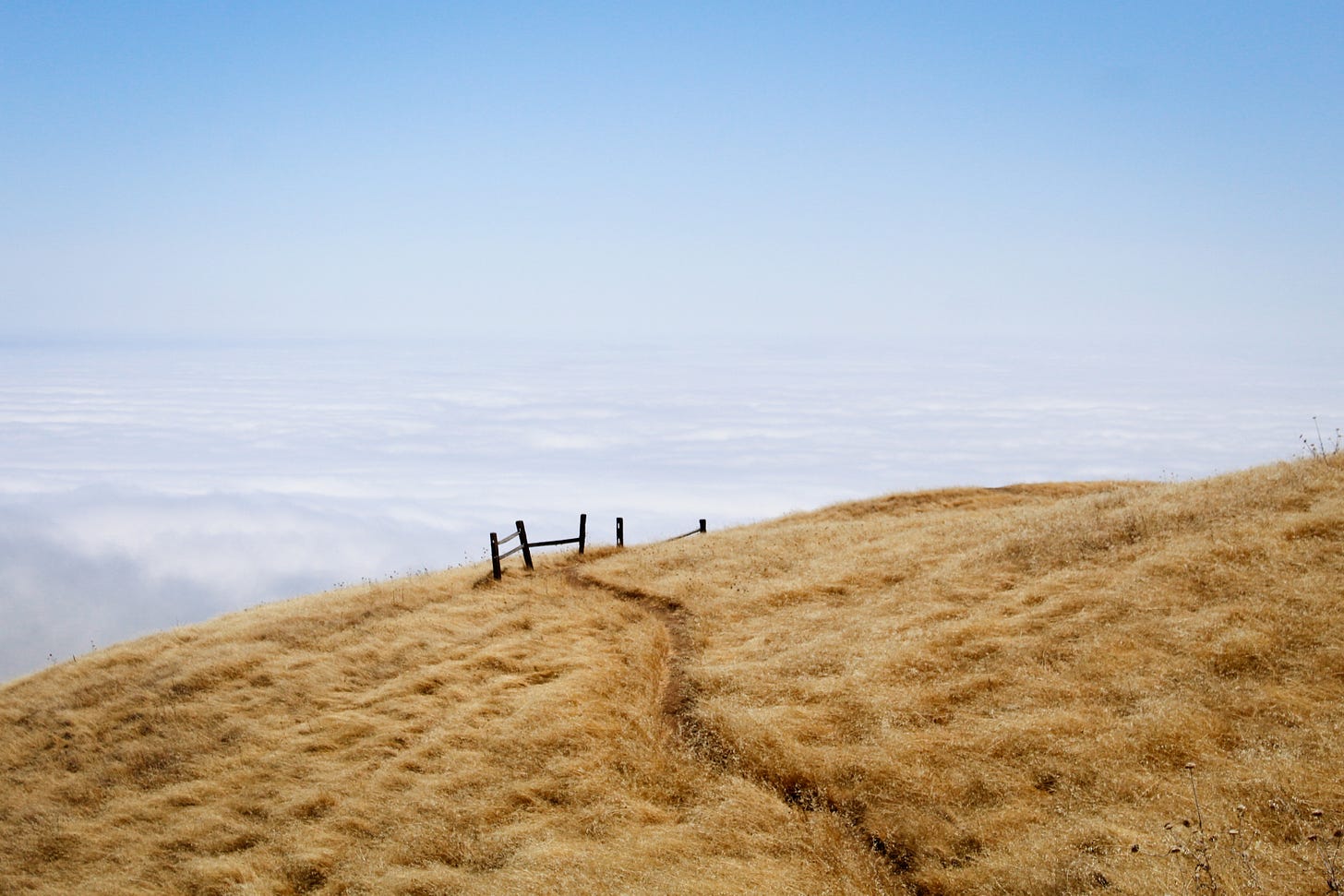
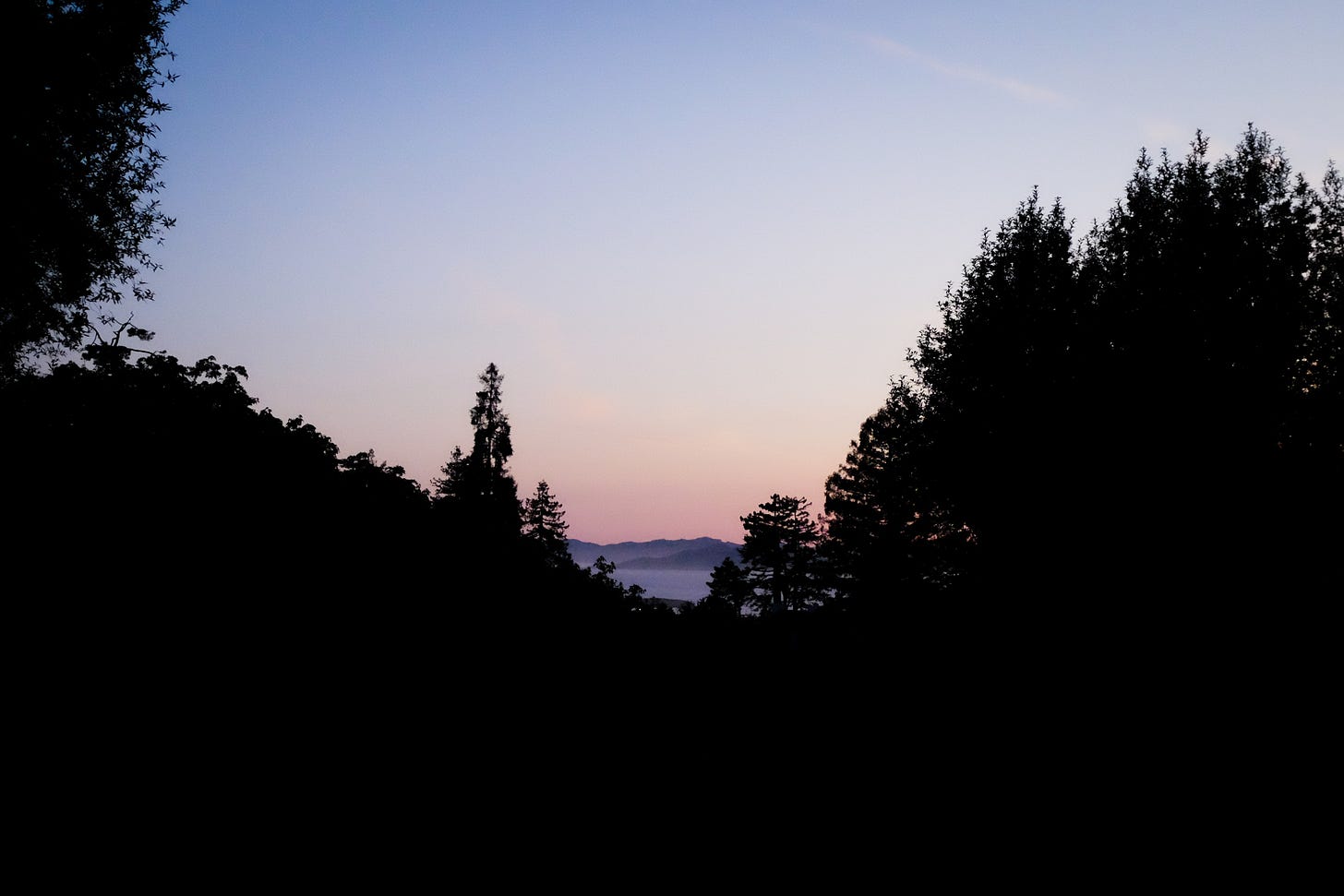
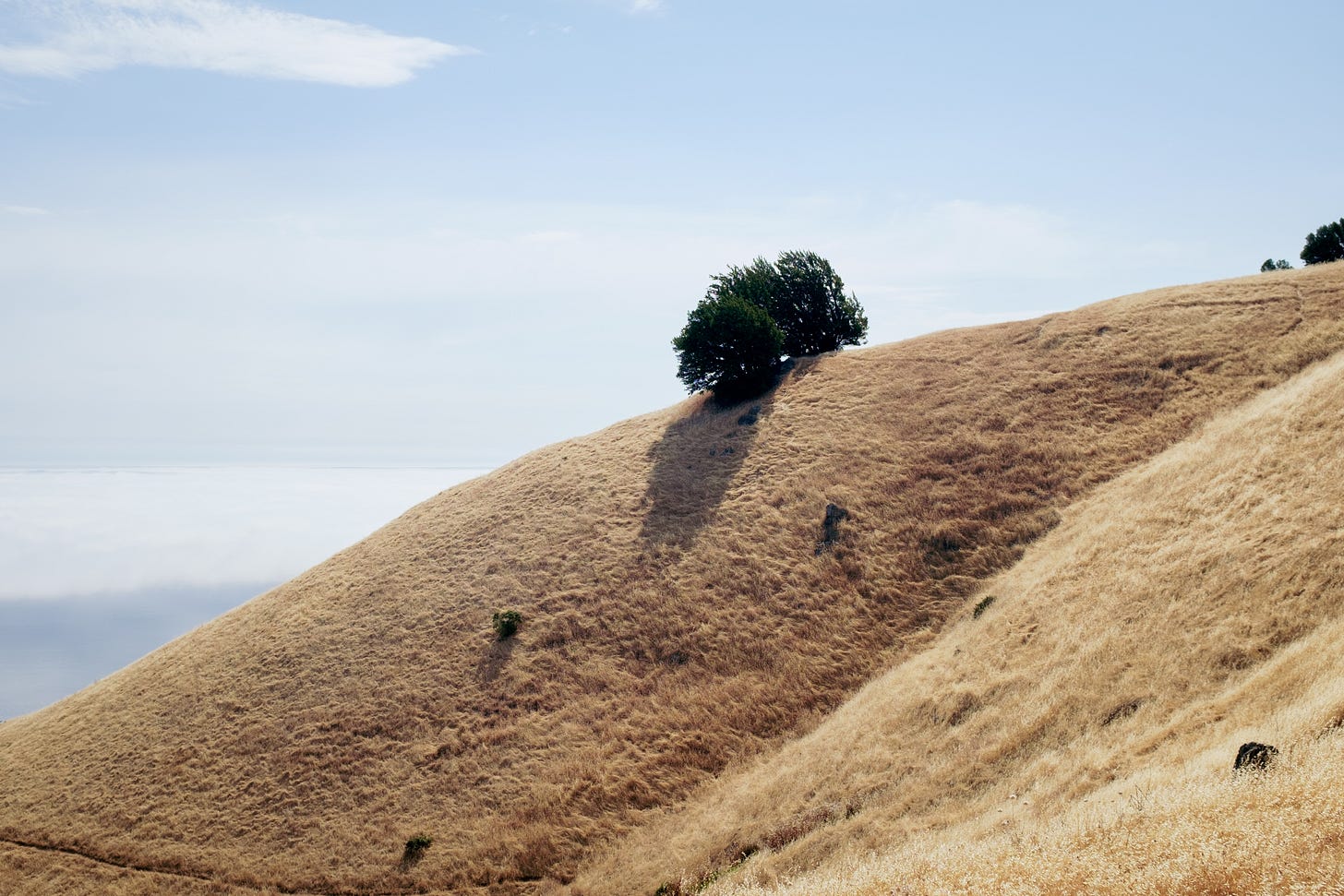


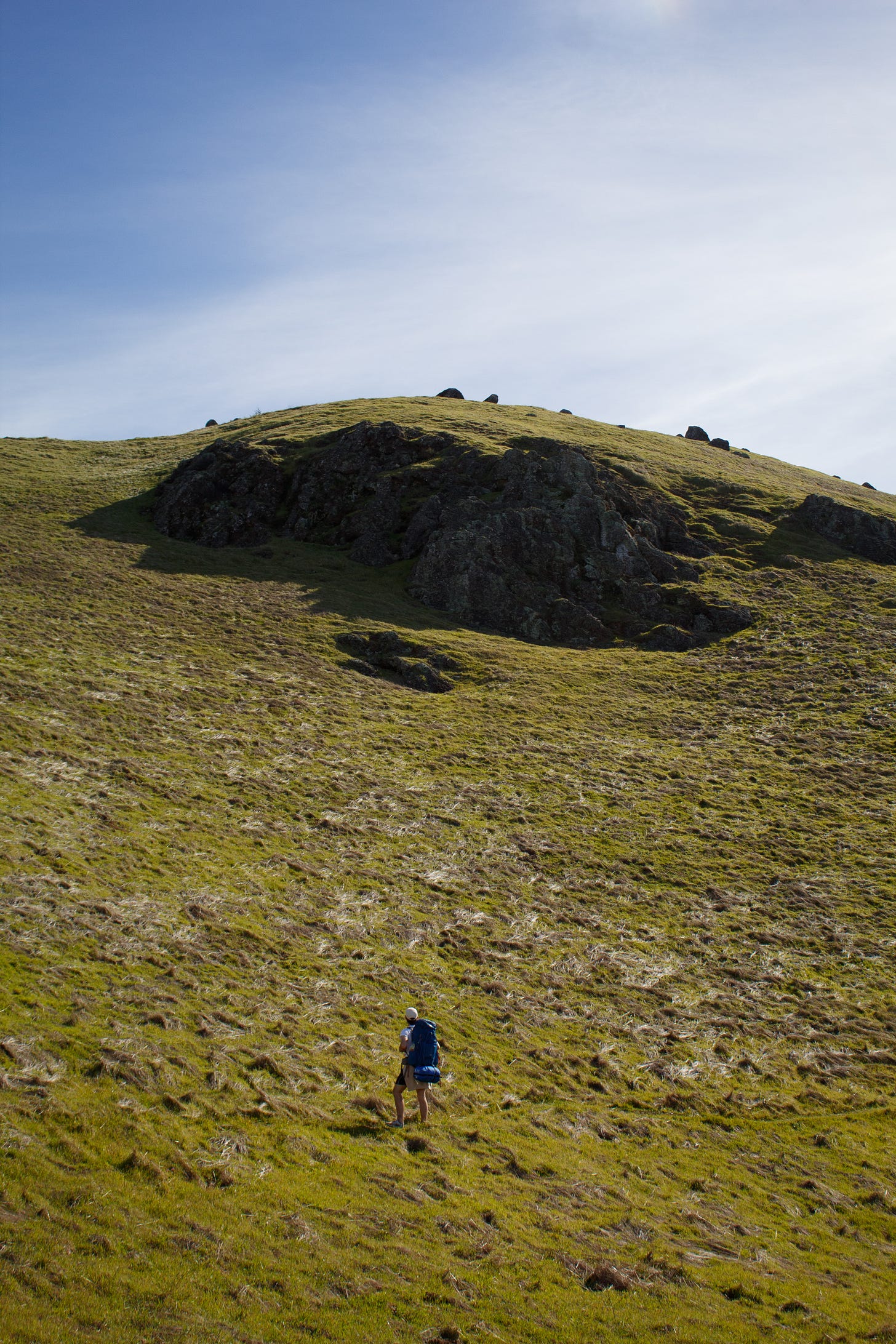
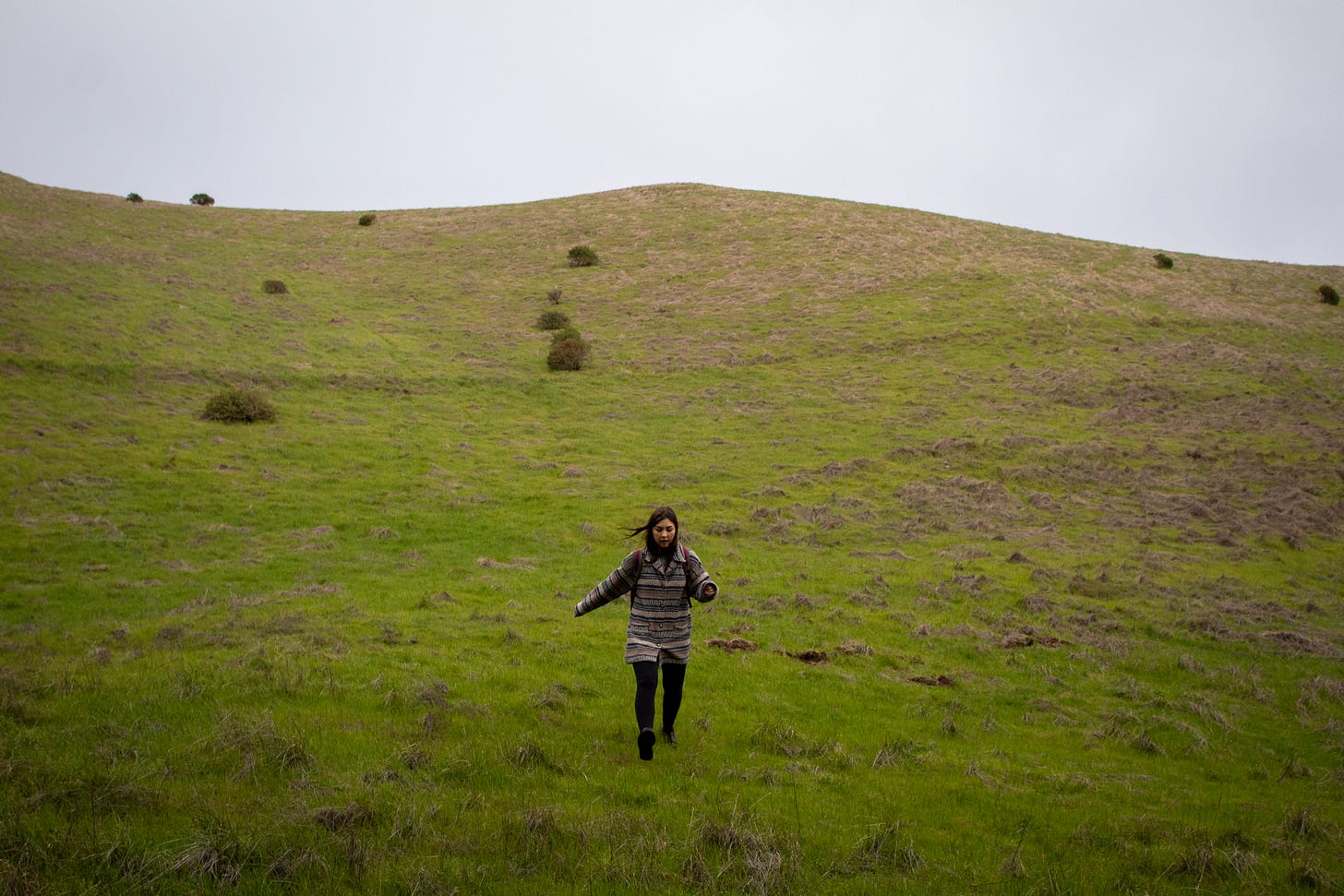
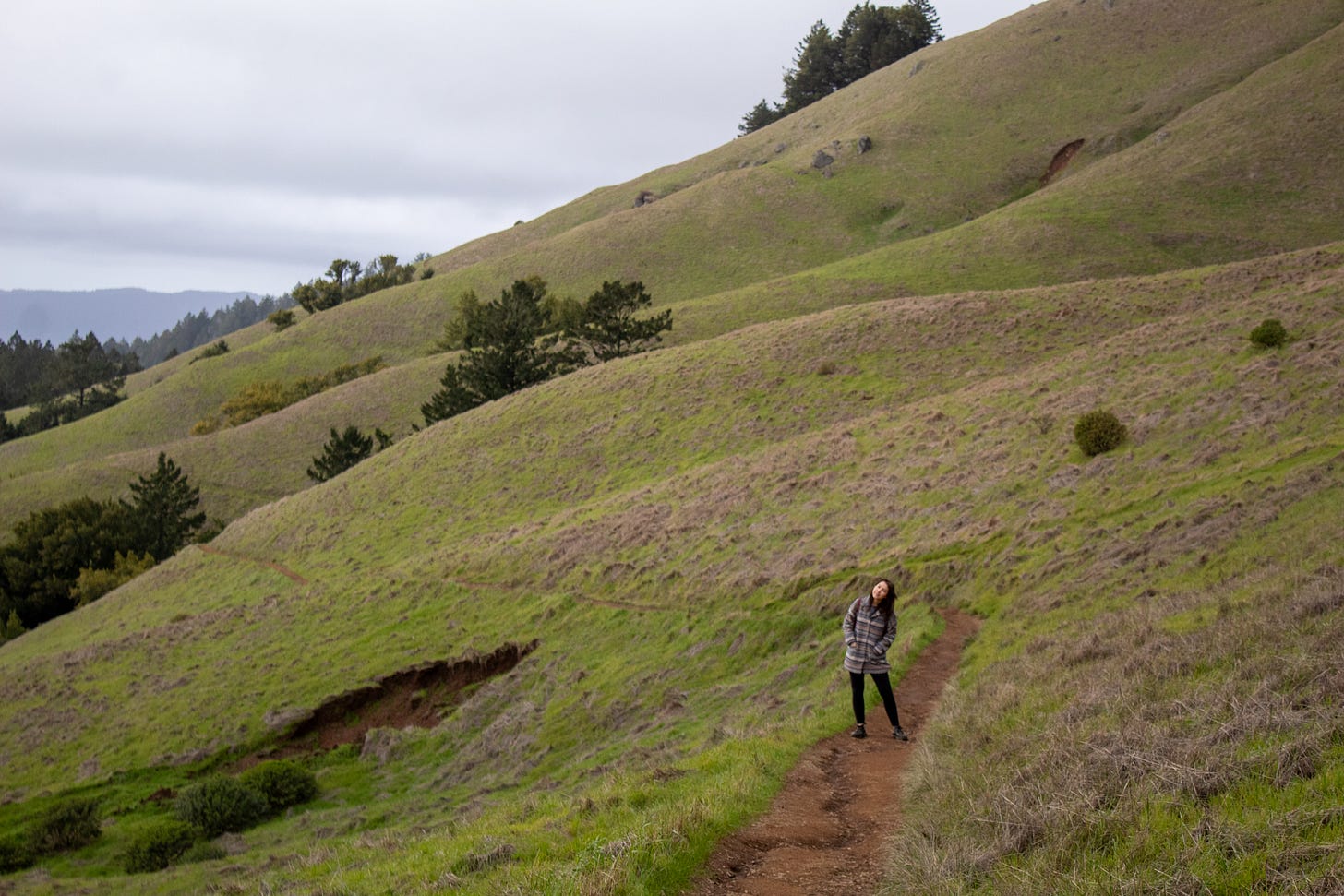
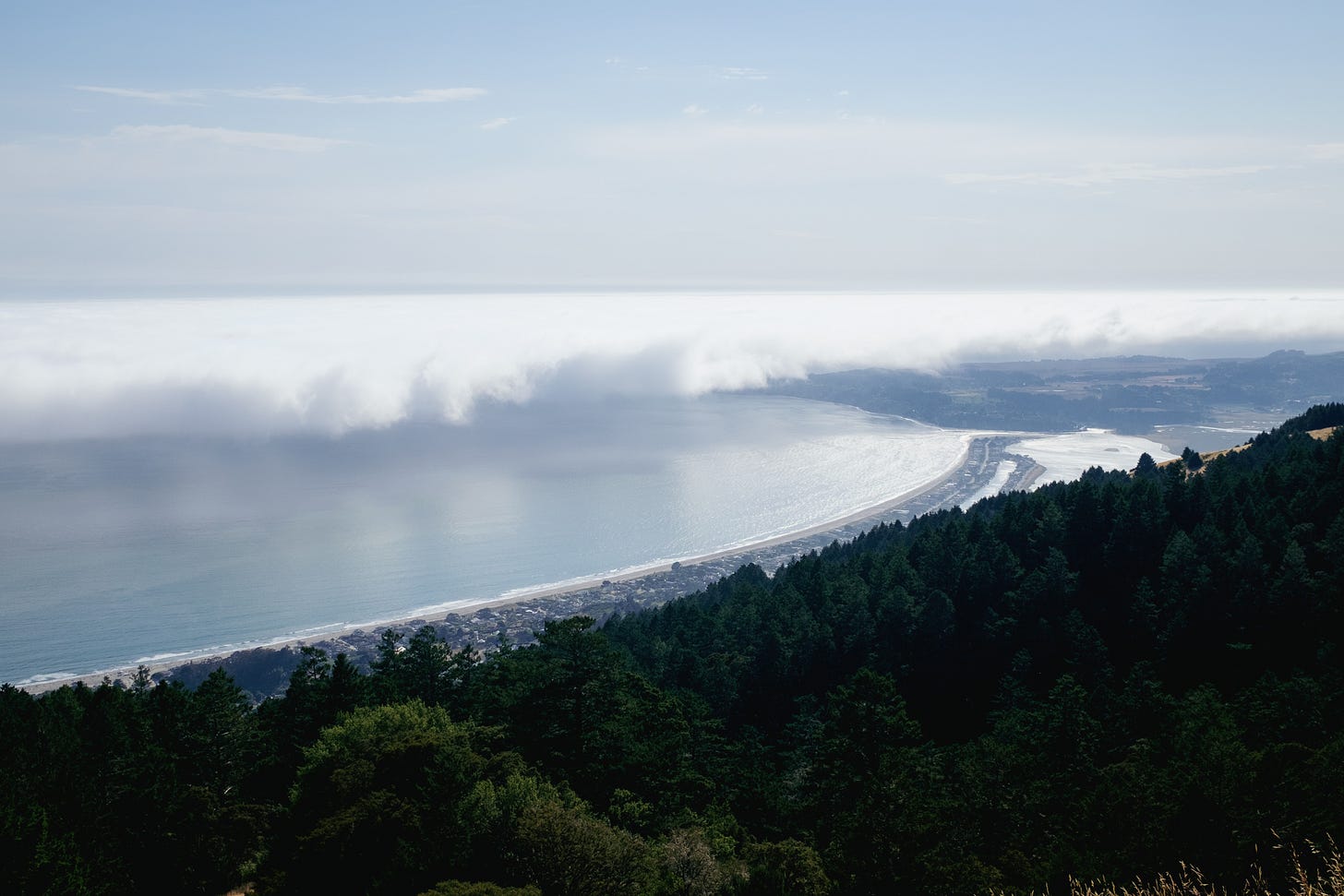

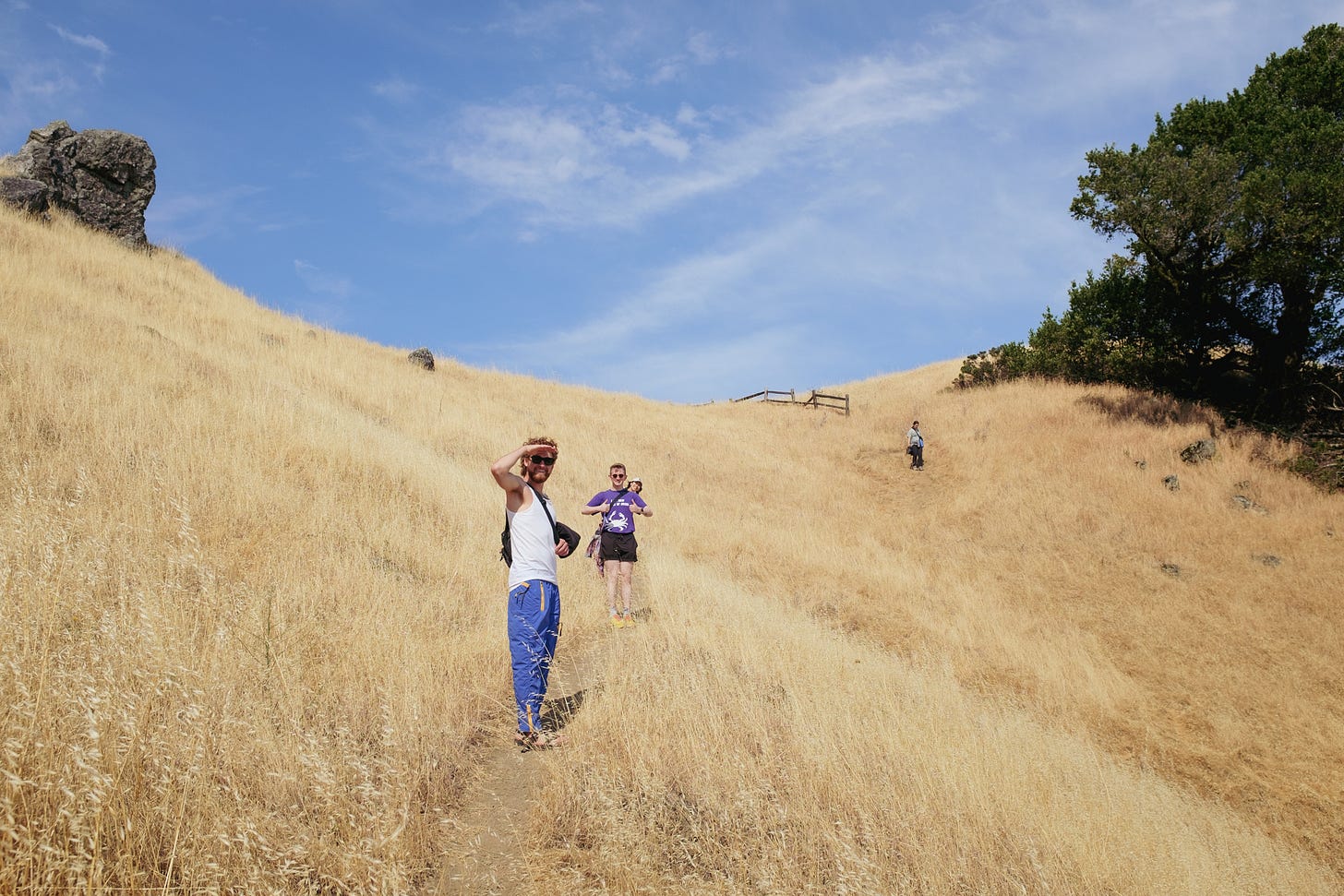

Utterly dreamlike. That first image looks like you've reached the edge of the world.
So many amazing pictures. It’s like you’re seeking to recapture the cover of Cloud Hidden, which I remember you reading when we were younger.